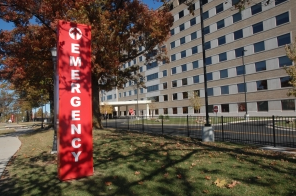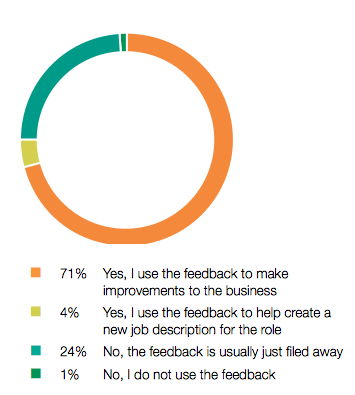 In the hyper-competitive healthcare market in the United States, some hospitals are now relying on customer satisfaction surveys to help improve patient loyalty.
In the hyper-competitive healthcare market in the United States, some hospitals are now relying on customer satisfaction surveys to help improve patient loyalty.
These service-savvy hospitals are going right to the source and asking patients about their visits. They use surveys to gauge every single part of a patient’s stay—from how they were greeted on arrival, to the care from the doctors, to their discharge.
In Indiana, www.therepublic.com recently explored some of the survey tactics being used by local hospitals.
“Hospitals such as Johnson Memorial Hospital and Franciscan St. Francis Health-Indianapolis attempt to survey all patients, even though the questions are required only for Medicare patients,” wrote Kate Knable of the Daily Journal.
“Their goal is to assess overall patient satisfaction in areas such as doctor communication and how quiet the hospital is when patients are trying to sleep. And from the surveys, hospital officials decide how they can improve their services.”
Repeat patients are obviously crucial to the success of any hospital. By following up and listening to feedback, a hospital can ensure they’re top of mind in their area.
If you have any questions about what customer satisfaction surveys can do for your company, please don’t hesitate to contact us any time.
 Do short rides to and from work lead to better employee satisfaction surveys? Recent data says they do.
Do short rides to and from work lead to better employee satisfaction surveys? Recent data says they do.
As many as 76 per cent of Canadians said they want a reasonable commute to the office, according to the “Destination Collaboration: The Future of Work” study by Oxford Properties and Environics Research Group.
Their data also shows:
- 82 per cent feel that a commute time of less than 30 minutes is the appropriate travel time to work
- One third said they would be willing to work an extra three hours per week for a reasonable commute to the office
- 50 per cent of respondents state that commute time is the number one factor that would cause them to choose one employer over another
- Nearly 40 per cent said they also want their workplace to be close to lifestyle amenities, such as shops, restaurants and gyms
"Employees and job seekers are placing an even greater emphasis on the value of their time and the transit options of a workplace," said Andrew McAllan, Senior Vice President and Managing Director, Real Estate, Oxford Properties.
"Optimizing office location and transit accessibility in conjunction with collaborative spatial design and a wide variety of amenities, will be crucial selling points for employers to attract and retain the brightest, most loyal employees."
If you have any questions about what an employee satisfaction survey can do for your company, please don’t hesitate to contact us any time.
 We recently came across some unfortunate findings from a study about the exit survey and interview process. A recent poll suggests that as many as 24 per cent of Australian and New Zealand employers will ignore the feedback from exit surveys or interviews.
We recently came across some unfortunate findings from a study about the exit survey and interview process. A recent poll suggests that as many as 24 per cent of Australian and New Zealand employers will ignore the feedback from exit surveys or interviews.
These findings come from a recent white paper called “The Exit Process -How To Gain Valuable Insights To Build a Better Workplace,” from the firm Robert Walters.
“While 70% of hiring managers use the feedback to make improvements to the business, almost a quarter, a significant minority, just file the feedback away with the candidate’s resignation letter,” said the report.
To ascertain these numbers, Robert Walters surveyed more than 300 hiring managers and more than 700 professionals across Australia and New Zealand.
Their findings also show that 63 per cent of respondents have been asked to complete a formal interview. In terms of how useful they found it, respondents were split down the middle with 37 per cent saying, “Yes, it was useful to me and the company.” Another 36 per cent said they did not think it was worthwhile.
If you have any questions about what exit survey software can do for your company, please don’t hesitate to contact us any time.
 The practical use for the exit survey isn’t limited to the business world. Top colleges and universities can benefit from the results.
The practical use for the exit survey isn’t limited to the business world. Top colleges and universities can benefit from the results.
For example, the US - Graduate Management Admission Council (GMAC) has revealed that 87 per cent of Indian MBA students who graduated this year were placed in top companies, based on the results they acquired from an exit survey from graduates.
The GMAC exit survey of graduating management students was conducted among students in 129 business schools around the world.
Schools and educational organizations can use the exit survey as a tool to see:
- What students thought of their experience
- Where schools are succeeding
- Where students could use more guidance
- How students are fairing in the business world
An online exit survey can be filled out remotely, so it’s far more effective than an exit interview. It can be sent to students across the world at any time. This means you can easily send it to students from a year or so ago, to see how their career is going and if they’re working in the sector they trained for.
If you have any questions about what exit survey software can do for your organization, please don’t hesitate to contact us any time.
 Planet Earth just got some terrible results from an employee engagement survey. According to the results of a recent Gallup Poll, only 13 per cent of employees across the globe are engaged in their jobs.
Planet Earth just got some terrible results from an employee engagement survey. According to the results of a recent Gallup Poll, only 13 per cent of employees across the globe are engaged in their jobs.
Based on Gallup’s numbers, The Harvard Business Review created an interesting map that highlights each country’s respective engagement levels.
The State of the Global Workplace: Employee Engagement Insights for Business Leaders Worldwide report highlights findings from Gallup’s ongoing study of workplaces in more than 140 countries from 2011 through 2012.
“Countries that double the number of engaged employees in every company will be best positioned to win the lion’s share of the US$140 trillion in new customers.
Doing so starts with you in your company. And it spreads around the country from there,” wrote Gallup’s Jim Clifton, Chairman and CEO.
“When and if your company, and then country, doubles its workforce engagement, only great things will follow: an economic boom, an explosion of innovative ideas, and a surge in entrepreneurship. No country can ramp up ideas and entrepreneurship high enough right now. There are literally trillions in customer revenue waiting to be won.”
The report also estimates that active disengagement costs US$450 billion to $550 billion per year, in the United States along.
If you want to know how involved your employees are, please don’t hesitate to contact us to find out more about employee engagement surveys.